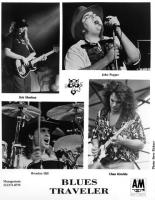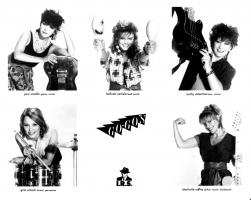HORIZON RECORDS


A&M Records announced Horizon Records as a jazz series not a label in May 1975. A&M planned to release one album per month from Horizon retailing for $5.98. John Snyder, who started his career under Creed Taylor at CTI Records, was to head the series as the creative director. Billboard quoted Mr. Snyder, "The Horizon Series concept is to present sophisticated contemporary jazz in the best production and merchandising package possible....We hope to widen the jazz market by creative merchandising and packaging at the high level of taste and quality that has been associated with A&M." (June 7, 1975) The label was headquartered in A&M Records' New York Office at 595 Madison Avenue which handled recording and album packages.
Like CTI, Horizon Records developed distinctive album packaging and liner notes for its recordings. Each of the original albums was packaged in a gatefold cover. The inside of the cover contained artist biography and/or song notes, discography, lead sheet transcription of a song on the album, photos of the artist or the recording session, and a stereo mix diagram or graphic scope that showed the channels of the instruments during the mix of a song so the listener could set his stereo system to replicate the intended sound.
On October 31, 1975, the first five Horizon albums were released and were supported with a marketing campaign. The Dave Brubeck and Paul Desmond album "The Duets" was Horizon's first Top 200 album on the Billboard Pop Album Chart. Horizon would not chart again for three years.
The Revolutionary Ensemble signed in December 1975.
On January 20, 1976 the first five albums on Horizon Records were launched in England by A&M Records, Ltd. The albums, imported from the U.S., were promoted as "up-market jazz repertoire destined for the discriminating collector."
March 1976 was "Horizon Month" in Canada with a promotion campaign on the Horizon series of albums.
Signed Brenda Russell and re-signed Thad Jones and Mel Lewis in 1976. In October, Gil Friesen confirmed that A&M had not made a decision on whether to keep or drop Horizon.
Don Mizell was hired as the director of product management working out of A&M's headquarters in Los Angeles.
In March 1977, A&M launched a major sales campaign of more than 70 titles from CTI, A&M and Horizon. The campaign included print and radio ads, and for retailers, posters, mobiles and an in-store play sampler.
Inexplicably, A&M Records used the Horizon Records logo for its Superstar Teaching Machine Series. These were reading and activity packages for early elementary school children. There were packages featuring The Captain and Tennille, the Carpenters, Peter Frampton, Billy Preston, Cat Stevens and Paul Williams. Each featured a cardboard carrying case, reissued 45, poster, and activity book.
In June 1977, John Snyder left Horizon Records. In its first two years, Horizon had built a catalog of 25 albums. None of the artists who recorded the albums were still signed to Horizon. (Note: John Snyder was Chet Baker's manager. In 1977, Baker recorded two albums that were finally released in 1990 on CD, The Best Thing for You and You Can't Go Home Again. The albums were somewhat of a reunion of CTI personnel Don Sebesky produced, Paul Desmond played his final recording sessions, Ron Carter sat in on drums. Former CTI artist Hubert Laws and Horizon artist Richard Beirach appeared on the recordings too.
In September, Horizon album prices increased from $6.98 to $7.98.
l apart with a separate style for album graphics.
In November 1977, A&M brought Tommy LiPuma (the first A&R head of A&M Records) to Horizon Records to "redefine the label as a contemporary music series." LiPuma's title was vice president and creative director of Horizon Records. By this time there were 25 albums in the Horizon catalog, however, according to LiPuma, "the original label simply wasn't in a very strong financial position." With this re-launch, the Horizon staff was based in the A&M Studios. Horizon would use A&M's marketing and promotion departments but wanted to set the label. The first release under LiPuma was by Herb Alpert and Hugh Masekela.
In February 1978, three of Horizon's first five albums were on the Billboard Jazz Chart. Each would sell around 50,000 copies. A&M created a sampler album from these albums for radio, retail and colleges. Herb Alpert and Hugh Masekela recorded a concert, "The Main Event Live," on Horizon. It was a Top 100 Billboard Pop album.
In July 1978, Tommy LiPuma announced Horizon would be "a wide ranging eclectic label with its only criteria being musical excellence." The new roster was Richard Evans, David Grisman, Dr. John, Neil Larsen and Mark-Almond. The first releases were expected in September. LiPuma wanted to grow the artist roster while developing an effective product flow .
In 1978, Horizon Records signed Mark-Almond, Dr. John, David Grisman, Neil Larsen, Richard Evans, Brenda Russell, Yellow Magic Orchestra, Seawind, Gordon Michaels. It also signed Eleanor Mills who did not release an album for Horizon.
In March 1979, Eileen Basich was promoted to product manager; Fred Mancuso became the first director of promotion and marketing with Kathy Kenyon as the assistant director of promotion and marketing.
Brenda Russell was Billboard's #23 Top Female Album Artist in its 1980 Number One Awards.
Horizon's last Billboard successes would be in 1979 when Brenda Russell charted with a Top 100 album and a Top 40 single.
In September 1979, both Billboard and Melody Maker reported that A&M closed Horizon Records because of an industry-wide slump in music sales. All the staff was let go. The artists signed in 1978 were still on the roster.
Horizon Records released 28 singles with one Top 30 Billboard Pop Chart hit and 55 albums including 14 from What? Records. Four of the albums were on Billboard's Top Pop Album chart; two were Top 100 and two were Top 200.
In 1988, 11 Horizon Records titles were reissued on CD in A&M's Jazz Heritage Series (CD 0800). Packaged in trifold digipaks, these were small printings that were taken out of print quickly. Selections from Horizon Records were included on the two A&M Jazz Heritage Series samplers.
In November 1990, Herb Alpert hired Tom Schnabel to be the vice president in charge of Horizon Records and to produce world music albums for the label. Schnabel estimated the label would release about eight albums a year.
HORIZON RECORDS FORMATS AND PRICES
| YEAR | SERIES | ALBUM | CASSETTE | CD |
|---|---|---|---|---|
| 1978-1980 | SP 700 | $7.98 | $7.98 | $7.98 |
| 1982 | SP 700 | $8.98 | $8.98 | $8.98 |
| 1983 | SP 700 | $8.98 | $8.98 | Deleted |
| 1984-1988 | SP 700 | $9.98 | $8.98 | Deleted |
SOURCES:
A&M Horizon Jazz Series Rates Pop-Type Campaign. Eliot Tiegel. Billboard, October 11, 1975.
Inside Track. Billboard, October 16, 1976.
Mizell to A&M Horizon. Record World, February 12, 1977.
A&M Launches Promo on Jazz. Billboard, March 19, 1977.
Re-Defined Horizon Enfolds New Acts. Ed Harrison. Billboard, July 15, 1978.
LiPuma Readies Revamped Horizon's First Releases. Sam Sutherland. Record World, August 26, 1978.
A&M Ponders Fate of Defunct Horizon Acts. Billboard, September 1, 1979.
Ed Michel Jazz Producer
A&M Horizon to Broaden Its Base. Cashbox, July 15, 1978.
Whitburn, Joel. Joel Whitburn's Top Pop Albums 1955 - 1996. Menomonee Falls, WI: Record Research, Inc., 1996.
Whitburn, Joel. Top Pop Singles 1955 - 1999. Menomonee Falls, WI: Record Research, Inc., 2000.
Whitburn, Joel. Top Adult Contemporary Singles 1961 - 2001. Menomonee Falls, WI: Record Research, Inc., 2002.
Whitburn, Joel. The Billboard Book of Top 40 R&B and Hip-Hop Hits 1942-2004. New York: Billboard Books, 2006.
Whitburn, Joel. Top R&B Albums 1965-1998, Menomonee Falls, WI: Record Research, Inc., 1999.
Cashbox Magazine pop single music charts from 1979 and 1980.
National Academy of Recording Arts and Sciences
A&M Hires Tom Schnabel and His Eclectic Ear As Head of Its Revived Horizon Records. Los Angeles Business Journal, November 11, 1990.
A&M Horizon Package Set For January. Music Week, December 27, 1975.

























